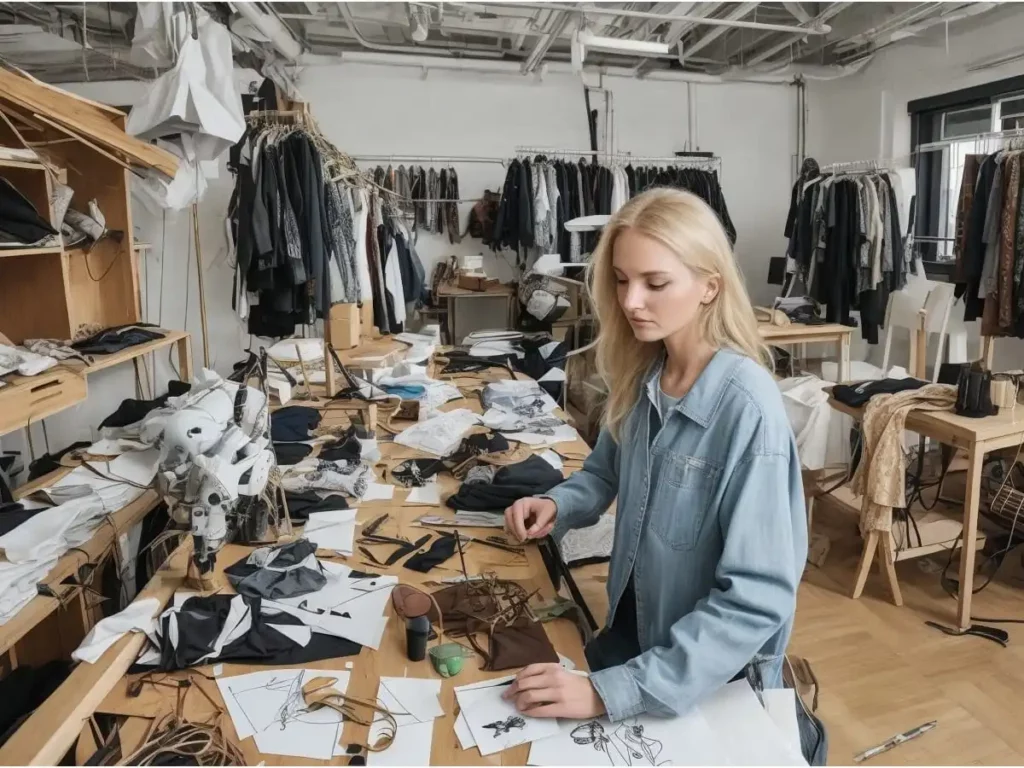
The Future of Human-Technology Interdependence: Insights from WGSN
Reading Time: 5 Minutes
In its latest insights, WGSN (Worth Global Style Network) anticipates that 2026 will be a transformative period in fashion, marked by consumer disruption. An intricate blend of sustainable craftsmanship and technology based aspirations and a revived appreciation for traditional practices. Through research into these projected shifts, we explore the multifaceted changes expected to reshape the industry.
Lisa White, Director of Strategic Forecasting and Creative at WGSN, predicts a pivotal shift towards deeper integration between technology and humanity. She emphasizes the dual potential of this transformation, highlighting emerging trends such as TikTokers emulating video game gestures and platforms like Wild Capture facilitating virtual product showcases.
New Frontiers in Technological Integration
Additionally, the landscape of technological integration is rapidly evolving, marked by innovative developments across various sectors. For instance, companies like BioSynth Innovations are pioneering sustainable materials through biologically engineered substitutes for traditional textiles, aiming to revolutionize fashion with environmentally friendly alternatives.
Meanwhile, initiatives in augmented reality (AR) by companies such as ARwave are reshaping consumer experiences, allowing users to interact with virtual products in real-world settings. These advancements not only enhance shopping convenience but also reduce the environmental impact of physical manufacturing.
Innovative Healthcare Advances and the Emergence of Digital Minimalism
In the realm of healthcare, advancements in personalized medicine, such as CRISPR gene editing technology by GenomeTech, promise revolutionary treatments tailored to individual genetic profiles, marking a significant leap forward in medical innovation.
Simultaneously, the growing trend of digital minimalism, exemplified by movements like Digital Detox retreats, reflects a societal shift toward seeking balance and mindfulness in an increasingly digital world.
Navigating the Impact of Artificial Intelligence: Insights from WGSN.
Artificial intelligence sparks both curiosity and concern, prompting calls for transparency and caution against social biases. Lisa White highlights that 42% of American AI experts harbor mixed feelings about the evolution of human-technology interaction but to some extent, supports a blend of sustainable craftmanship and technology. She cites examples of AI’s positive influence, such as Avfall Norge’s use of AI to pinpoint textile waste origins and Space 10’s identification of local materials for design.
WGSN also notes strategic implementations by tech giants like Google, TikTok, and Adobe to distinguish AI-generated content. Truepic also contributes to a brawl against ‘deepfakes,’ which presents new and controversial challenges that legislators, attorneys, and businesses must now address. Furthermore, twenty years ago, Dove took a stand against false beauty standards. With the expectation of 90% AI-generated content by 2025, Dove remains steadfast with its tagline, “keep beauty real.”
Embracing the Bio-Industrial Revolution: The Rise of Eco-Responsibility
As environmental concerns drive consumer expectations toward a “bio-industry revolution,” coined in response to widespread “eco-rage,” the urgency for sustainable practices is unmistakable. Lisa White underscores the enduring nature of ecological consciousness, emphasizing its permanence in our societal fabric. Her report advocates for businesses to promote ethical behavior among both producers and consumers, reflecting a profound shift towards sustainability as a lasting commitment.
Innovative Approaches to Sustainable Craftmanship & Technology Across Industries

Forward-thinking companies are pioneering innovations in sustainability. For instance, British brand Biotextile Innovations has created programmable fungal mycelium for use in GreenStyle’s EcoSatchel. BioBeauty cultivates algae in labs for eco-friendly cosmetics and fragrances, reducing reliance on marine resources. ReNew Footwear innovates by repurposing agricultural waste, such as corn husks and coconut fibers, for eco-conscious shoe and accessory designs.
The quest for zero trace extends beyond products, encompassing entire business models. EcoWear strategically limited its lifespan to sell off RenewMaterials’ dormant stocks, exemplifying a transient approach to sustainable craftmanship and technology.
In contrast, SustainableWardrobe offers an annual subscription model for garment access and exchange, promoting longevity and reducing waste. Organic Jeans’ Endless Comfort denim enhances biodegradability with detachable buttons and eco-friendly dyes, threads, and patches, aligning with evolving consumer preferences for durable and sustainable choices.
Gen Z’s Shift to Authenticity
Social media’s personalized recommendations, which foster a sense of belonging and “romantic consumerism,” are influencing a shift in consumer behavior, according to WGSN. This self-fulfillment narrative has historically fueled fast fashion but is now encountering resistance from Gen Z. This generation’s heightened ecological awareness. Which has sparked a blend of sustainable craftmanship and technology. Moreover, it boosted a trend fatigue, and a rejection of repetitive mass consumption. Government interventions, such as the European Union’s option to disable advertising algorithms, further underscore this shift.
The virtualization of brand experiences has amplified a desire for authenticity in consumer-brand relationships. For example, Lush’s decision to reduce reliance on tech giants like Google and Apple reflects a growing preference for direct, meaningful engagements with customers. Lisa White notes a concurrent demand for unique retail experiences that diverge from standardized chain stores, emphasizing artisanal and human-centric alternatives.
Balancing Consumer Aspirations Amidst Financial Realities
Despite aspirations for quality and authenticity, financial constraints often lead consumers to make compromises. Platforms like TikTok and Reddit, which normalize and facilitate such purchases, enabled a significant 52% of young Europeans aged 15 to 24 to purchase counterfeit products online last year.
Amidst this dichotomy, there’s a growing demand for multi-sensory experiences as a counterbalance to increasingly virtualized lifestyles. Lisa White suggests a shift towards ’emotioneering’, where sensory elements like smell, taste, and touch enhance consumer engagement. White also stresses the importance of fashion brands offering responsibly priced products, challenging the notion that blend of sustainable craftmanship and technology comes at a high cost.
“We must debunk the myth that sustainability is always expensive,”
Lisa White
Citation
- https://www.wgsn.com/en/blogs/trend-qa-exploring-craft-boom-and-more



Leave a Reply